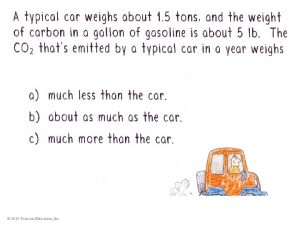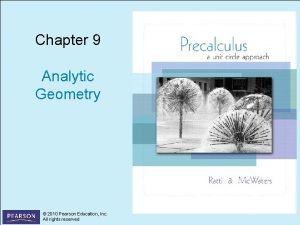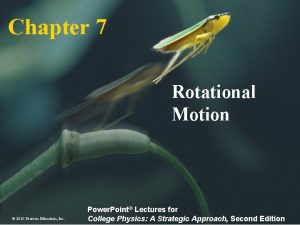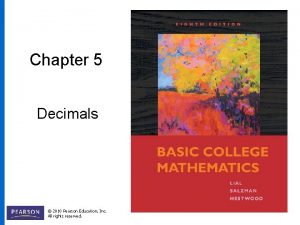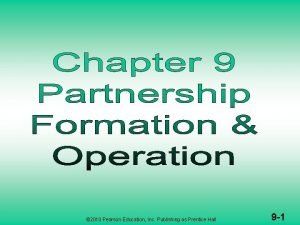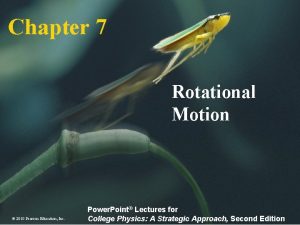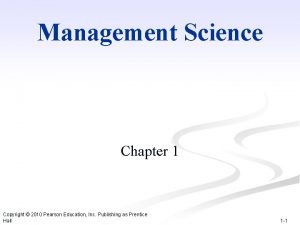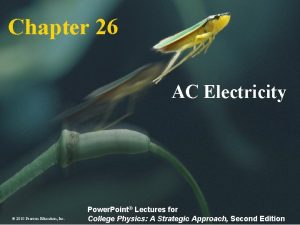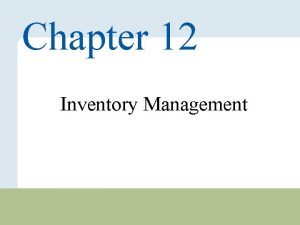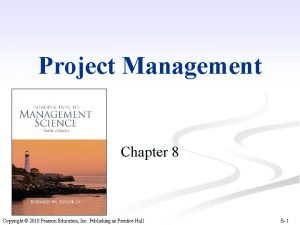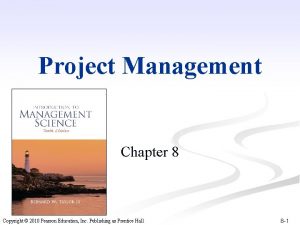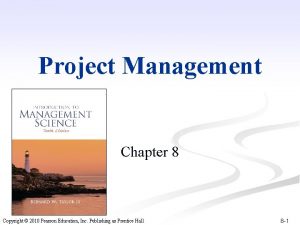Project Management Chapter 8 Copyright 2010 Pearson Education






























































- Slides: 62

Project Management Chapter 8 Copyright © 2010 Pearson Education, Inc. Publishing as Prentice Hall 8 -1

What is a project? Copyright © 2010 Pearson Education, Inc. Publishing as Prentice Hall 8 -2

Project Life Cycle n n Conception: identify the need Feasibility analysis or study: costs benefits, and risks n Planning: who, how long, what to do? n Execution: doing the project n Termination: ending the project Copyright © 2010 Pearson Education, Inc. Publishing as Prentice Hall 8 -3

Network Planning Techniques ■ Network representation is useful for project analysis. ■ Networks show project activities are organized and are used to determine time duration of projects. ■ Network techniques used are: ▪ CPM (Critical Path Method) ▪ PERT (Project Evaluation and Review Technique) ■ Developed independently during late 1950’s. Copyright © 2010 Pearson Education, Inc. Publishing as Prentice Hall 8 -4

Project Planning ■ All activities (steps) of the project should be identified. ■ The sequential relationships of the activities (which activity comes first, which follows, etc. ) is identified by precedence relationships. ■ Steps of project planning: ■ Make time estimates for activities, determine project completion time. ■ Compare project schedule objectives, determine resource requirements. Copyright © 2010 Pearson Education, Inc. Publishing as Prentice Hall 8 -5

Elements of Project Management Project Scheduling ■ Project Schedule : Timely completion of project. ■ Schedule development steps: 1. Define activities, 2. Sequence activities, 3. Estimate activity times, 4. Construct schedule. ■ Gantt chart and CPM/PERT techniques can be useful. ■ Computer software packages available, e. g. Microsoft Project. Copyright © 2010 Pearson Education, Inc. Publishing as Prentice Hall 8 -6

Elements of Project Management Gantt Chart (1 of 2) ■ Popular, traditional technique, also known as a bar chart -developed by Henry Gantt (1914). ■ Used in CPM/PERT for monitoring work progress. ■ A visual display of project schedule showing activity start and finish times and where extra time is available. ■ Gantt Chart is suitable for projects with few activities and precedence relationships. Copyright © 2010 Pearson Education, Inc. Publishing as Prentice Hall 8 -7

Elements of Project Management Gantt Chart (2 of 2) Figure 8. 4 A Gantt chart Copyright © 2010 Pearson Education, Inc. Publishing as Prentice Hall 8 -8

The Project Network CPM/PERT Activity-on-Arc (AOA) Network ■ A branch reflects an activity of a project. ■ A node represents the beginning and end of activities, referred to as events. ■ Branches in the network indicate precedence relationships. ■ When an activity is completed at a node, it has been realized. Copyright © 2010 Pearson Education, Inc. Publishing as Prentice Hall 8 -9

The Project Network Concurrent Activities ■ Time duration of activities shown on branches. ■ Activities can occur at the same time (concurrently). ■ A dummy activity shows a precedence relationship but reflects no passage of time. ■ Two or more activities cannot share the same start and end nodes. Figure 8. 7 A Dummy Activity Copyright © 2010 Pearson Education, Inc. Publishing as Prentice Hall 8 -10

The Project Network AOA Network for House Building Project Figure 8. 6 Expanded Network for Building a House Showing Concurrent Activities Copyright © 2010 Pearson Education, Inc. Publishing as Prentice Hall 8 -11

The Project Network AON Network for House Building Project Activity-on-Node (AON) Network § A node represents an activity, with its label and time shown on the node § The branches show the precedence relationships § Convention used in Microsoft Project software Label Duration Copyright © 2010 Pearson Education, Inc. Publishing as Prentice Hall Figure 8. 8 8 -12

The Project Network Paths Through a Network Path A B C D Events 1 2 4 7 1 2 5 6 7 1 3 4 7 1 3 5 6 7 Table 8. 1 Paths Through the House-Building Network Copyright © 2010 Pearson Education, Inc. Publishing as Prentice Hall 8 -13

The Project Network The Critical Path The critical path is the longest path through the network; the minimum time the network can be completed. From Figure 8. 8: Path A: 1 2 4 7 3 + 2 + 3 + 1 = 9 months Path B: 1 2 5 6 7 3 + 2 + 1 + 1= 8 months Path C: 1 3 4 7 3 + 1 + 3 + 1 = 8 months Path D: 1 3 5 6 7 3 + 1 + 1 = 7 months Copyright © 2010 Pearson Education, Inc. Publishing as Prentice Hall 8 -14

The Project Network Detailed Analysis of Critical Path (1 2 4 7) Figure 8. 9 Activity start time Copyright © 2010 Pearson Education, Inc. Publishing as Prentice Hall 8 -15

The Project Network Activity-on-Node Configuration Figure 8. 10 Activity-on-Node Copyright © 2010 Pearson Education, Inc. Publishing as Configuration Prentice Hall 8 -16

The Project Network Activity Scheduling : Earliest Times ■ ES is the earliest time an activity can start: ES = Maximum (EF) ■ EF is the earliest start time plus the activity time: EF = ES + t Figure 8. 11 Earliest activity start and finish times Copyright © 2010 Pearson Education, Inc. Publishing as Prentice Hall 8 -17

The Project Network Activity Scheduling : Latest Times ■ LS is the latest time an activity can start without delaying critical path time: LS = LF - t ■ LF is the latest finish time. LF = Minimum (LS) Figure 8. 12 Latest activity start and finish times Copyright © 2010 Pearson Education, Inc. Publishing as Prentice Hall 8 -18

The Project Network Activity Slack Time (1 of 2) n Slack is the amount of time an activity can be delayed without delaying the project: S = LS – ES = LF - EF n Slack Time exists for those activities not on the critical path for which the earliest and latest start times are not equal. Activity *1 *2 3 LS 0 3 4 ES 0 3 3 LF 3 5 5 EF 3 5 4 Slack, S 0* 0* 1 *4 5 6 *7 5 6 7 8 5 5 6 8 8 7 8 9 8 6 7 9 0* 1 1 0* Copyright © 2010 Pearson Education, Inc. Publishing as Prentice Hall Table 8. 2 *Critical path 8 -19

The Project Network Activity Slack Time (2 of 2) Figure 8. 13 Activity slack Copyright © 2010 Pearson Education, Inc. Publishing as Prentice Hall 8 -20

Probabilistic Activity Times ■ Activity time estimates usually cannot be made with certainty. ■ PERT used for probabilistic activity times. ■ In PERT, three time estimates are used: most likely time (m), the optimistic time (a), and the pessimistic time (b). ■ These provide an estimate of the mean and variance of a beta distribution: variance: mean (expected time): Copyright © 2010 Pearson Education, Inc. Publishing as Prentice Hall 8 -21

Using Beta Probability Distribution to Calculate Expected Time Durations n A typical beta distribution is shown below, note that it has n definite end points The expected time for finishing each activity is a weighted average 8 -22

Probabilistic Activity Times Example (1 of 3) Figure 8. 14 Network for Installation Order Processing System Copyright © 2010 Pearson Education, Inc. Publishing as Prentice Hall 8 -23

Probabilistic Activity Times Example (2 of 3) Table 8. 3 Activity Time Estimates for Figure Copyright © 2010 Pearson Education, Inc. Publishing as Prentice Hall 8 -24

Probabilistic Activity Times Example (3 of 3) Figure 8. 15 Earliest and Latest Activity Times Copyright © 2010 Pearson Education, Inc. Publishing as Prentice Hall 8 -25

Probabilistic Activity Times Expected Project Time and Variance ■ Expected project time is the sum of the expected times of the critical path activities. ■ Project variance is the sum of the critical path activities’ variances ■ The expected project time is assumed to be normally distributed. ■ Epected project time (tp) and variance (vp) are interpreted as the mean ( ) and variance ( 2) of a normal distribution: = 25 weeks 2 = 62/9 = 6. 9 (weeks)2 Copyright © 2010 Pearson Education, Inc. Publishing as Prentice Hall 8 -26

Uncertain Activity Times n n In the three-time estimate approach, the critical path is determined as if the mean times for the activities were fixed times. The overall project completion time is assumed to have a normal distribution with mean equal to the sum of the means along the critical path and variance equal to the sum of the variances along the critical path. 8 -27

Probability Analysis of a Project Network (1 of 2) ■ Using the normal distribution, probabilities are determined by computing the number of standard deviations (Z) a value is away from the mean. ■ The Z value is used to find corresponding probability in Table A. 1, Appendix A. Copyright © 2010 Pearson Education, Inc. Publishing as Prentice Hall 8 -28

Probability Analysis of a Project Network (2 of 2) Figure 8. 16 Normal Distribution of Network Duration Copyright © 2010 Pearson Education, Inc. Publishing as Prentice Hall 8 -29

Probability Analysis of a Project Network Example 1 (1 of 2) What is the probability that the new order processing system will be ready by 30 weeks? µ = 25 weeks 2 = 6. 9 = 2. 63 weeks Z = (x- )/ = (30 -25)/2. 63 = 1. 90 Z value of 1. 90 corresponds to probability of. 4713 in Table A. 1, Appendix A (page 812). Probability of completing project in 30 weeks or less: (. 5000 +. 4713) =. 9713. Copyright © 2010 Pearson Education, Inc. Publishing as Prentice Hall 8 -30

Probability Analysis of a Project Network Example 1 (2 of 2) Figure 8. 17 Probability the Network Will Be Completed in 30 Weeks or Copyright © 2010 Pearson Education, Inc. Publishing as Prentice Less Hall 8 -31

Probability Analysis of a Project Network Example 2 (1 of 2) ■ A customer will trade elsewhere if the new ordering system is not working within 22 weeks. What is the probability that she will be retained? Z = (22 - 25)/2. 63 = -1. 14 ■ Z value of 1. 14 (ignore negative) corresponds to probability of. 3729 in Table A. 1, appendix A. ■ Probability that customer will be retained is (0. 5 -. 3729) =. 1271 Copyright © 2010 Pearson Education, Inc. Publishing as Prentice Hall 8 -32

Probability Analysis of a Project Network Example 2 (2 of 2) Figure 8. 18 Probability the Network Will Be Completed in 22 Weeks or Less Copyright © 2010 Pearson Education, Inc. Publishing as Prentice Hall 8 -33

Example: Frank’s Fine Floats is in the business of building elaborate parade floats. Frank and his crew have a new float to build and want to use PERT/CPM to help them manage the project. The table on the next slide shows the activities that comprise the project. Each activity’s estimated completion time (in days) and immediate predecessors are listed as well. Frank wants to know the total time to complete the project, which activities are critical, and the earliest and latest start and finish dates for each activity. 8 -34

Example: Frank’s Fine Floats Immediate Activity A B C D E F G H Description Predecessors Initial Paperwork --Build Body A Build Frame A Finish Body B Finish Frame C Final Paperwork B, C Mount Body to Frame D, E Install Skirt on Frame C Completion Time (days) 3 3 2 3 7 3 6 2 8 -35

Example: Frank’s Fine Floats n Project Network B 3 Start D 3 G F 6 A 3 3 E C 2 7 Finish H 2 8 -36

Example: Frank’s Fine Floats n Latest Start and Finish Times B 3 6 D 6 9 3 6 9 Start A 3 9 12 G F 6 6 12 18 9 12 18 3 15 18 0 3 3 0 3 E 5 C 3 5 2 3 5 Finish 12 7 5 12 H 5 7 2 16 18 8 -37

Example: Frank’s Fine Floats n Determining the Critical Path n n A critical path is a path of activities, from the Start node to the Finish node, with 0 slack times. Critical Path: A–C–E–G The project completion time equals the maximum of the activities’ earliest finish times. Project Completion Time: 18 days 8 -38

Example: Frank’s Fine Floats n Critical Path B 3 6 9 Start A D 6 9 3 9 12 G F 6 6 12 18 9 12 18 3 15 18 0 3 3 0 3 E 5 C 3 5 2 3 5 Finish 12 7 5 12 H 5 7 2 16 18 8 -39

Example: ABC Associates n Consider the following project: Activity A B C D E F G H I J K Immed. Optimistic Most Likely Pessimistic Predec. Time (Hr. ) -4 6 8 -1 4. 5 5 A 3 3 3 A 4 5 6 A 0. 5 1 1. 5 B, C 3 4 5 B, C 1 1. 5 5 E, F 5 6 7 E, F 2 5 8 D, H 2. 5 2. 75 4. 5 G, I 3 5 7 8 -40

Example: ABC Associates n Project Network 3 5 6 6 1 3 5 4 2 8 -41

Example: ABC Associates n Activity Expected Times and Variances Activity A B C D E F G H I J K t = (a + 4 m + b)/6 Expected Time 6 4 3 5 1 4 2 6 5 3 5 � 2 = ((b-a)/6)2 Variance 4/9 0 1/9 1/36 1/9 4/9 1 1/9 4/9 8 -42

Example: ABC Associates n Critical Path 6 11 (A-C-F-I-K) 5 15 20 0 6 6 0 6 13 19 6 14 20 6 7 1 12 13 6 9 9 0 4 4 5 9 9 13 4 9 13 19 22 3 20 23 13 18 5 13 18 9 11 2 16 18 18 23 5 18 23 8 -43

Example: ABC Associates n Probability that the project will be completed within 24 hrs: Variance= 4/9 + 0 + 1/9 + 1 + 4/9 = 2 Standard Deviation= 1. 414 z = (24 -23)/1. 414 =. 71 From the Standard Normal Distribution table: P(z <. 71) =. 5 +. 2612 = . 7612 8 -44

Example: Earth. Mover, Inc. Earth. Mover is a manufacturer of road construction equipment including pavers, rollers, and graders. The company is faced with a new project, introducing a new line of loaders. What is the critical Path? 8 -45

Example: Earth. Mover, Inc. Immediate Completion Activity Description Predecessors Time (wks) A Study Feasibility --6 B Purchase Building A 4 C Hire Project Leader A 3 D Select Advertising Staff B 6 E Purchase Materials B 3 F Hire Manufacturing Staff B, C 10 G Manufacture Prototype E, F 2 H Produce First 50 Units G 6 I Advertise Product D, G 8 8 -46

Example: Earth. Mover, Inc. n PERT Network 6 8 4 6 3 3 2 6 10 8 -47

Example: Earth. Mover, Inc. n Critical Activities 10 16 6 16 22 0 6 6 10 4 6 10 6 9 3 7 10 22 30 8 22 30 10 13 3 17 20 10 10 20 20 22 22 28 6 24 30 8 -48

Example Problem Statement and Data (1 of 2) Given this network and the data on the following slide, determine the expected project completion time and variance, and the probability that the project will be completed in 28 days or less. Copyright © 2010 Pearson Education, Inc. Publishing as Prentice Hall 8 -49

Example Problem Statement and Data (2 of 2) Copyright © 2010 Pearson Education, Inc. Publishing as Prentice Hall 8 -50

Example Problem Solution (1 of 4) Step 1: Compute the expected activity times and variances. Copyright © 2010 Pearson Education, Inc. Publishing as Prentice Hall 8 -51

Example Problem Solution (2 of 4) Step 2: Determine the earliest and latest activity times & slacks Copyright © 2010 Pearson Education, Inc. Publishing as Prentice Hall 8 -52

Example Problem Solution (3 of 4) Step 3: Identify the critical path and compute expected completion time and variance. § Critical path (activities with no slack): 1 3 5 7 § Expected project completion time: tp = 9+5+6+4 = 24 days § Variance: vp = 4 + 4/9 + 1/9 = 5 (days)2 Copyright © 2010 Pearson Education, Inc. Publishing as Prentice Hall 8 -53

Example Problem Solution (4 of 4) Step 4: Determine the Probability That the Project Will be Completed in 28 days or less (µ = 24, = 5) Z = (x - )/ = (28 -24)/ 5 = 1. 79 Corresponding probability from Table A. 1, Appendix A, is. 4633 and P(x 28) =. 4633 +. 5 =. 9633. Copyright © 2010 Pearson Education, Inc. Publishing as Prentice Hall 8 -54

XYZ Company is bringing a new product on line to be manufactured in their current facility using existing space. The owners have identified 11 activities and their precedence relationships. Develop an AON for the project. 8 -55

Project Network with Deterministic Time Estimates 8 -56

LS, LF Network 8 -57

Calculating Expected Task Times © Wiley 2007 8 -58

Project Activity Variance © Wiley 2007 Activity Optimistic Most Likely Pessimistic Variance A 2 4 6 0. 44 B 3 7 10 1. 36 C 2 3 5 0. 25 D 4 7 9 0. 69 E 12 16 20 1. 78 F 2 5 8 1. 00 G 2 2 2 0. 00 H 2 3 4 0. 11 I 2 3 5 0. 25 J 2 4 6 0. 44 K 2 2 2 0. 00 8 -59

Estimated Path Durations through the Network n © Wiley 2010 ABDEGIJK is the expected critical path & the project has an expected duration of 44. 83 weeks and expected variance is 4. 96. 8 -60

QUESTIONS Calculate the probability of finishing the project within 48 weeks n Calculate the probability of finishing the project within 40 weeks n Calculate the probability of finishing the project within 44. 83 weeks n n Copyright © 2010 Pearson Education, Inc. Publishing as Prentice Hall 8 -61

Answers a) P(x<=48)=P(z<=48 -44. 83/2. 23) =P(z<=1. 42)=0. 5+0. 4222 b) P(x<=40)=P(z<=40 -44. 83/2. 23) =P(z<=-2. 17)=0. 5 -0. 485 c) p(x<=44. 83)=P(z<=0)=0. 5 Copyright © 2010 Pearson Education, Inc. Publishing as Prentice Hall 8 -62
 Copyright 2010 pearson education inc
Copyright 2010 pearson education inc Copyright 2010 pearson education inc
Copyright 2010 pearson education inc Copyright 2010 pearson education inc
Copyright 2010 pearson education inc Copyright 2010 pearson education inc
Copyright 2010 pearson education inc Copyright 2010 pearson education inc
Copyright 2010 pearson education inc Copyright 2010 pearson education inc
Copyright 2010 pearson education inc 2010 pearson education inc
2010 pearson education inc Copyright 2010 pearson education inc
Copyright 2010 pearson education inc Composition copyright example
Composition copyright example Copyright 2010 pearson education inc
Copyright 2010 pearson education inc 2017 pearson education ltd
2017 pearson education ltd 2017 pearson education inc
2017 pearson education inc 2009 pearson education inc
2009 pearson education inc 2018 pearson education inc
2018 pearson education inc Copyright 2014 pearson education inc
Copyright 2014 pearson education inc Copyright by pearson education inc. answers
Copyright by pearson education inc. answers 2008 pearson education inc
2008 pearson education inc Copyright 2009 pearson education inc
Copyright 2009 pearson education inc Copyright pearson education inc
Copyright pearson education inc Copyright 2009 pearson education inc
Copyright 2009 pearson education inc 2009 pearson education inc
2009 pearson education inc 2009 pearson education inc
2009 pearson education inc Copyright 2009 pearson education inc
Copyright 2009 pearson education inc Copyright pearson education inc
Copyright pearson education inc 2010 pearson education inc
2010 pearson education inc 2010 pearson education inc answers
2010 pearson education inc answers 2010 pearson education inc answers
2010 pearson education inc answers 2010 pearson education inc answers
2010 pearson education inc answers 2010 pearson education inc answers
2010 pearson education inc answers 2010 pearson education inc
2010 pearson education inc 2010 pearson education inc
2010 pearson education inc 2010 pearson education inc
2010 pearson education inc 2010 pearson education inc answers
2010 pearson education inc answers Pearson education inc 5
Pearson education inc 5 2010 pearson education inc
2010 pearson education inc Pearson education 2010
Pearson education 2010 Pearson education inc. all rights reserved
Pearson education inc. all rights reserved 2010 pearson education inc answers
2010 pearson education inc answers 2010 pearson education inc
2010 pearson education inc 2010 pearson education inc
2010 pearson education inc 2010 pearson education inc answers
2010 pearson education inc answers 2010 pearson education inc
2010 pearson education inc 2010 pearson education inc
2010 pearson education inc Pearson education inc. all rights reserved
Pearson education inc. all rights reserved 2010 pearson education inc answers
2010 pearson education inc answers Income statement pearson
Income statement pearson 2010 pearson education inc answers
2010 pearson education inc answers Pearson education inc. publishing as prentice hall
Pearson education inc. publishing as prentice hall Pearson education inc. publishing as prentice hall
Pearson education inc. publishing as prentice hall Pearson education inc publishing as pearson prentice hall
Pearson education inc publishing as pearson prentice hall Pearson education inc publishing as pearson prentice hall
Pearson education inc publishing as pearson prentice hall 2012 pearson education inc
2012 pearson education inc 2008 pearson prentice hall inc
2008 pearson prentice hall inc Copyright 2010
Copyright 2010 Variazioni finanziarie attive e passive
Variazioni finanziarie attive e passive Copyright 2010
Copyright 2010 Copyright 2010
Copyright 2010 Introduction to software project management
Introduction to software project management 2005 pearson prentice hall inc
2005 pearson prentice hall inc Pearson 2010
Pearson 2010 Pearson vue ceo
Pearson vue ceo Stress management for life 5th edition
Stress management for life 5th edition National education policy 1998 to 2010
National education policy 1998 to 2010


























